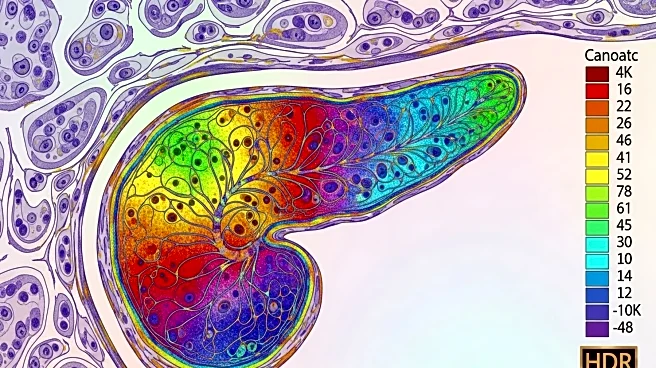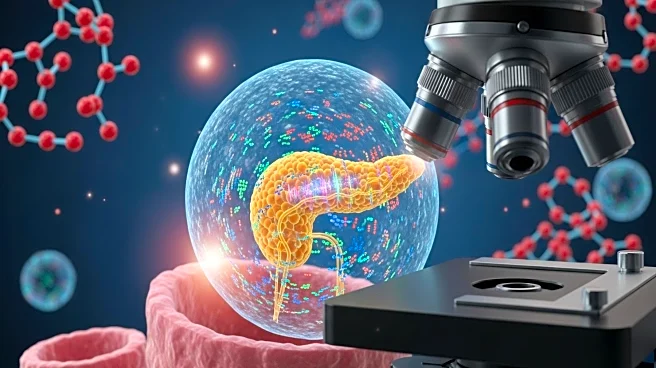What's Happening?
The National Institutes of Health (NIH) has released a comprehensive spatial transcriptomics dataset focusing on pancreas sections from donors with normal glucose tolerance and type 2 diabetes. This dataset, processed using advanced spatial gene expression technology, provides detailed gene expression profiles at a 55 μm resolution. The data includes gene-specific unique molecular identifier counts across thousands of spots, normalized for sequencing depth variations. The dataset aims to enhance understanding of pancreatic tissue structure and function, particularly in the context of diabetes. It also addresses technical challenges such as transcript bleed, using computational corrections to improve data accuracy. This resource is expected to facilitate further research into the transcriptional changes associated with type 2 diabetes.
Why It's Important?
This dataset is significant for the medical and scientific community as it provides a high-resolution view of gene expression in pancreatic tissues, crucial for understanding diabetes. By offering insights into the spatial distribution of gene expression, researchers can better understand the cellular environment of the pancreas in both healthy and diabetic states. This could lead to the identification of new biomarkers for diabetes and potentially inform the development of targeted therapies. The dataset's availability for meta-analysis with future data sets also opens avenues for broader research collaborations and advancements in diabetes treatment strategies.
What's Next?
Researchers are expected to utilize this dataset to conduct exploratory analyses of transcriptional changes in diabetic pancreas tissues. The data may also be used in conjunction with other datasets to overcome donor-to-donor variation and enhance the robustness of findings. Future studies could focus on validating the presence or spatial distribution of specific genes of interest, potentially leading to new discoveries in diabetes research. Additionally, advancements in computational methods and deep learning models may further refine the resolution and application of this dataset.
Beyond the Headlines
The release of this dataset highlights the growing importance of spatial transcriptomics in biomedical research. It underscores the potential of combining high-resolution gene expression data with computational tools to address complex biological questions. This approach may also pave the way for similar studies in other diseases, enhancing our understanding of disease mechanisms at a cellular level.











